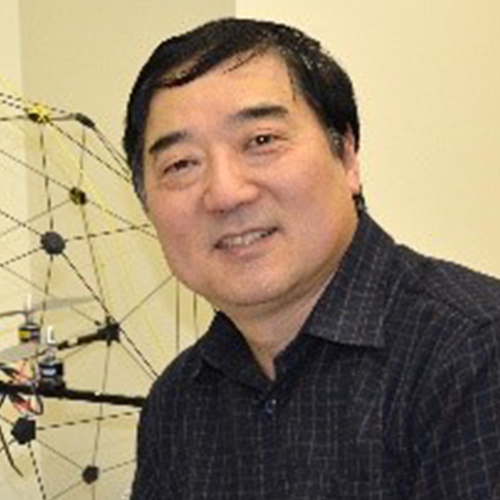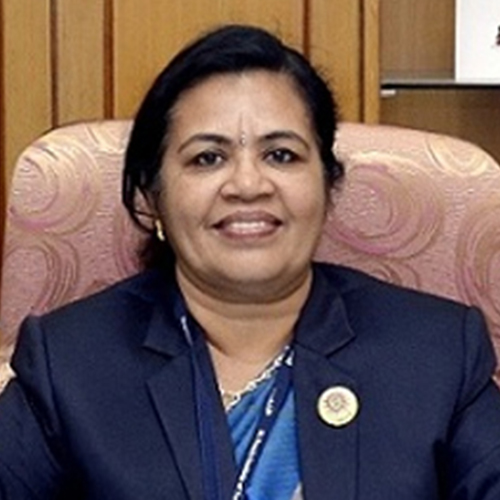Tutorials Information
Tutorial 1
Enhancing Dependability in Cyber-Physical Renewable Energy Systems
- Friday, June 20, 2:00 PM – 3:30 PM
- Room 344

Youmin Zhang, Professor
Department of Mechanical, Industrial and Aerospace Engineering
Concordia University, Montreal, Canada

Hamed Badihi, Assistant Professor
Faculty of Engineering and Natural Sciences
Tampere University, Tampere, Finland
Abstract
Cyber-physical renewable energy systems (RESs), comprising wind turbines, solar photovoltaic (PV) arrays, and batteries integrated into microgrids, form the backbone of the next-generation electricity grid, commonly referred to as the “smart grid.” Enhancing the dependability (safety, security, reliability, availability, and resilience) of these RESs, both on the physical and cyber fronts, demands innovative approaches for physical-faults and cyber-attacks monitoring and fault-tolerant and attack-resilient control. Despite their distinct origins, both faults and cyber-attacks can have comparable consequences, leading to increased operating costs, physical damages, and potential cascading failures. Swift identification and differentiation of these incidents are essential to implement timely corrective actions and limit system damages.
This tutorial focuses on the critical importance of early detection, diagnosis, and mitigation of physical-faults and cyber-attacks in cyber-physical RESs and microgrids to facilitate their dependable operation towards a future goal of electrification for resilient and decarbonized systems and communities fighting with climate change and global warming. Recent advancements in digitalization and the Industrial Internet of Things (IoT) have enabled robust intrusion detection and cyber-attack mitigation countermeasures, offering unprecedented advantages. Moreover, the tremendous computational power available in modern computers has propelled artificial intelligence (AI) and advanced machine learning capabilities to new heights. Leveraging these developments, we can efficiently convert vast and multidimensional sensor data into valuable insights, enabling intelligent monitoring and reliable control of energy and power systems.
Tutorial 2
Cybersecurity for Intelligent Transportation System: Foundations, Trends, and Opportunities
- Friday, June 20, 3:45 PM – 5:15 PM
- Room 302

Prof. Max Mauro Días Santos, PhD
Associate Professor and Department Chair
Department of Electronics
Federal Technological University of Paraná – Ponta Grossa
Abstract
The increasing adoption of Connected, Autonomous, Shared, and Electric (CASE) vehicles has introduced complex challenges in ensuring the cybersecurity of Intelligent Transportation Systems (ITS). The interplay between physical components, communication networks, and digital interfaces within automotive systems creates a vast and intricate attack surface for adversaries to exploit. Addressing these challenges requires a comprehensive understanding of industry standards, processes, methods, and tools for cybersecurity.
This tutorial provides an in-depth exploration of cybersecurity foundations, trends, and opportunities for ITS, with a focus on CASE vehicles. Participants will learn about the underlying technologies, including Electronic Control Units (ECUs), communication protocols (CAN, Automotive Ethernet, FlexRay), and application protocols (SOME/IP, DoIP, AVB/TSN). The tutorial emphasizes privacy and security considerations, adherence to standards like ISO 26262 and ISO 21434, and best practices outlined in SAE J3061, UNECE WP.29, and ENISA guidelines.
The workshop will also delve into cutting-edge methods, including Artificial Intelligence (AI)-driven approaches to cybersecurity, dataset generation, penetration testing techniques, and the application of Autosar Secure Onboard Communication (SecOC) and IDS/IPS technologies. By integrating theory with practical demonstrations, participants will acquire actionable insights and strategies to safeguard ITS architectures.
Tutorial 3
Application of Machine Learning in Electric Motors; Design, Control, Condition Monitoring, Practical Solutions
- Friday, June 20, 3:45 PM – 5:15 PM
- Room 338

Dr. Babak Nahid-Mobarakeh
Fellow, IEEE, McMaster Automotive Resource Center (MARC)
McMaster University, Hamilton, ON, Canada

Arta Mohmmad-Alikhani
Graduate Student Member, IEEE, McMaster Automotive Resource Center (MARC)
McMaster University, Hamilton, ON, Canada
Abstract
Electric motors are widely used in different industries, including transportation, energy, manufacturing, and robotics. Their performance and reliability are especially critical in sensitive applications such as aerospace, medical devices, and high-precision industrial processes. Traditionally, ensuring optimal efficiency, control, and effective fault detection in electric motors has relied on inaccurate or computationally expensive approaches. However, with advancements in computational power and data availability, machine learning (ML) has emerged as a transformative tool for enhancing motor design, control, and condition monitoring.
This tutorial explores the application of ML techniques in electric motors and focuses on three key areas: design, control, and condition monitoring.
In motor design, ML-based optimization techniques, such as deep learning and surrogate modeling, enable efficient exploration of design parameters, reducing development time while improving performance and energy efficiency. ML models can predict complex electromagnetic, thermal, and mechanical behaviors that are otherwise difficult to model accurately using traditional model-based methods. Additionally, ML facilitates automated design-space exploration, accelerating innovation in high-performance motor development.
For control strategies, ML enhances adaptive and intelligent control techniques and overcomes the limitations of conventional PI and model predictive control (MPC) approaches. Reinforcement learning (RL) and deep learning-based controllers improve the dynamic response of electric motors by learning from operational data and adapting to changing conditions in real-time. Since electric motors have nonlinear behavior and performance variations under different operating conditions, ML-based observers can estimate critical state variables, such as speed and torque, addressing challenges in accurate state estimation. Moreover, ML techniques assist in parameter estimation, which is traditionally difficult due to the inherent nonlinear characteristics of electric motors operating under variable conditions. These advancements contribute to enhanced precision, reduced energy consumption, and robust control solutions for applications such as robotics, electric vehicles, and industrial automation.
In condition monitoring and fault detection, data-driven techniques have proven superior to traditional signal-based and model-based approaches. ML methods, including deep neural networks, convolutional neural networks, and classical ML algorithms, can identify fault patterns and anomalies in motor signals, enabling early detection of failures such as bearing wear, rotor asymmetry, and winding insulation degradation. Additionally, ML-driven predictive maintenance strategies can estimate motors’ remaining useful life (RUL), preventing unexpected failures and minimizing downtime.
This tutorial will provide practical insights into these applications and will show real-world case studies and industrial implementations. Attendees will gain a comprehensive understanding of how ML techniques transform electric motor technology, with discussions on algorithm selection, dataset preparation, feature engineering, and model deployment. The session will highlight emerging trends, such as hybrid physics-informed ML models, edge AI for real-time condition monitoring, and federated learning for collaborative motor diagnostics.
Tutorial 4
Optimizing On-Board Charging Infrastructure: PFC Converter Solutions for Electric Mobility
- Saturday, June 21, 10:30 AM – 12:00 PM
- Room 213

Dr. Arun Kumar Verma
Associate Professor,
Indian Institute of Technology, Jammu, India
Mr. Akash Deo
Research Scholar, Department of Electrical Engineering
Indian Institute of Technology, Jammu, India
Dr. GK Naveen Kumar
Schneider Electric Infrastructure Ltd. Bangalore, India
Abstract
This tutorial explores power factor correction (PFC) converter designs tailored for on-board charging applications in electric vehicles (EVs). The transition to EVs is accelerating worldwide due to environmental concerns and technological advancements. However, efficient charging infrastructure remains a critical challenge. Traditional two-stage chargers suffer from complexity, cost, and efficiency issues. In contrast, innovative PFC converter designs offer solutions to enhance charging efficiency, reliability, and scalability. This tutorial presents novel converter architectures and methodologies, focusing on efficiency, cost-effectiveness, compliance with standards, and technological innovation. Participants gain a comprehensive understanding of PFC converter principles, design techniques, industry best practices, and emerging trends, fostering collaboration and knowledge sharing within the industrial community.
Tutorial 5
Power quality issues due to industrial electronics equipment, its effects and an optimal solution
- Saturday, June 21, 10:30 AM – 12:00 PM
- Room 213B

George Sebastian
Former Associate Director and Head Electrical Design, Nuclear Power
Corporation of India, Mumbai, India

Sincy George
Head of the Institute, St. Francis Institute of Technology
University of Mumbai, India
Abstract
In recent years, there has been an increased use of power electronic systems and sensitive electronic equipment in power generation, transmission, utilisation of electrical energy and associated systems. Nonlinear impedances predominantly offered by the power converter-based systems draw non-sinusoidal or distorted currents from the power source causing distorted voltage across the transmission line and transformer impedances. This results distortion in power supply waveform and cause distortion voltampere and low power factor in system. Further, asymmetrical distribution of large, single-phase loads results in voltage and current imbalance in the three-phase system. Distorted, unbalanced voltage and/or current waveforms have several adverse effects on both utilities and consumer equipment connected the power supply system. Traditional equipment like heaters and incandescent lamps are least affected by imperfection in sinusoidal waveform of power supply. However modern sensitive electronic items, where its operation depend on supply waveform are more affected by power quality. Thus, in area where extreme accuracy and precision is required, ie., in application involving measurement, instrumentation, communication, signal processing, fault detection, control, automation, robotics etc., are more affected by waveform distortion or power quality. It also increases component heating, higher losses and cause accelerated ageing, necessitating increased frequency of maintenance or even interruption and failure of the system. Thus, incurring huge economic loss.
Having realised the importance of power quality, IEEE and IEC have formulated standards on the topic, more importantly on harmonics. Some countries have imposed economic penalties for violation of its regulations on power quality. Hence, an effective elimination of the harmonics from the supply system is essential for both the utilities and end users. Loads and renewable energy power generation in the system vary randomly and consequently the conventional solution under multiple harmonic frequency using tuned passive filters are ineffective.
Active compensation using voltage source converter is the solution to compensate for voltage or current harmonics, reactive power and imbalance in voltage or current in the system. Generally, current compensation is done using shunt active compensator and voltage compensation by series active compensator and both voltage and current can be controlled at the same time using shunt- series active compensator. Main parts of these compensators are voltage source DC to AC converter which injects required amount of voltage or and current into the system to achieve desired outcome.
Under sinusoidal conditions, shunt compensators control reactive power to improve power factor and series compensators to control reactive power consumed by the transmission line to control active power flow through the line. When voltage is sinusoidal and current is non-sinusoidal, shunt compensator eliminates distortion power in addition to reactive power to achieve unity power factor and distortion free current. However, under non-sinusoidal supply voltage and current conditions, any attempt to achieve unity power factor using shunt compensator, results in a non-sinusoidal current, which increases the total harmonic distortion. On the other hand, attempt at getting harmonic free current may not yield unity power factor because of the harmonics present in the voltage waveform. This tutorial presents an algorithm which optimizes trade-off between power factor and harmonics achieving the best compromise under non-sinusoidal voltage and current conditions. With the technique, an optimal operation of shunt, series and shunt-series compensator is possible. An algorithm developed and validated under various supply and load conditions meeting requirements of IEEE 519 is also covered in the tutorial.
Tutorial 6
Advances in Battery State Estimation using Machine Learning and Deep Learning toward AI-driven Battery Management Systems
- Sunday, June 22, 10:30 AM – 12:00 PM
- Room 213

Dominic Karnehm
University of the Bundeswehr Munich, Neubieberg, Germany

Sebastian Pohlmann
University of the Bundeswehr Munich, Neubiberg, Germany
Abstract
Li-Ion batteries are widely used in electric vehicles (EVs) and stationary energy storage applications due to their safety, lifetime, and inherent advantage in energy efficiency. Li-Ion batteries have shown great promise in various applications, and understanding their performance is crucial for future advancements.
Accurate modelling of cells’ behaviour is required to estimate the inner state. To increase the optimal use and lifespan of batteries, the determination of the states, such as State of Charge (SOC), State of Health (SOH), remaining useful life (RUL), thermal behaviour, and impedance, are crucial. As a result, industry and academia use various methods to estimate all kinds of battery states. Depending on the required accuracy and the accessible computational resources, different approaches to reproduce battery behaviour can be used. The proposed battery models in the literature can be classified into three categories: electrochemical models, equivalent circuit models, and data-driven models.
Electrochemical and equivalent circuit models characterize battery behavior through chemical parameters and electrical elements to simulate the underlying electrochemical processes and to replicate the battery performance characteristics.
Data-driven models employ several machine learning algorithms, including support vector machines, Gaussian process regression, and deep learning algorithms, such as Long short-term memory (LSTM), Kolmogorov-Arnold Network (KAN), and Physics Informed Neural Networks (PINN). Machine learning algorithms do not depend on knowledge about battery parameters but on large quantities of high-quality data, including different operational conditions, such as load, drive cycle, battery age, and temperature.
Data-driven techniques have shown promising results in accurate battery state estimations. The tutorial will present a detailed overview of machine learning and deep learning algorithms to estimate several battery states. With data augmentation and the addition of simulated data, we show and discuss a method to handle the lack of data necessary for training and validation and show the possibilities and advantages as well as the shortcomings of this method. High-accurate state estimation methods require a high amount of data and computational resources. Cloud-based BMS is an AI-enabling technology in battery storage systems. This tutorial will discuss the possibilities and required technologies to deploy cloud-based BMS, such as public cloud computing and the Internet of Things (IoT).